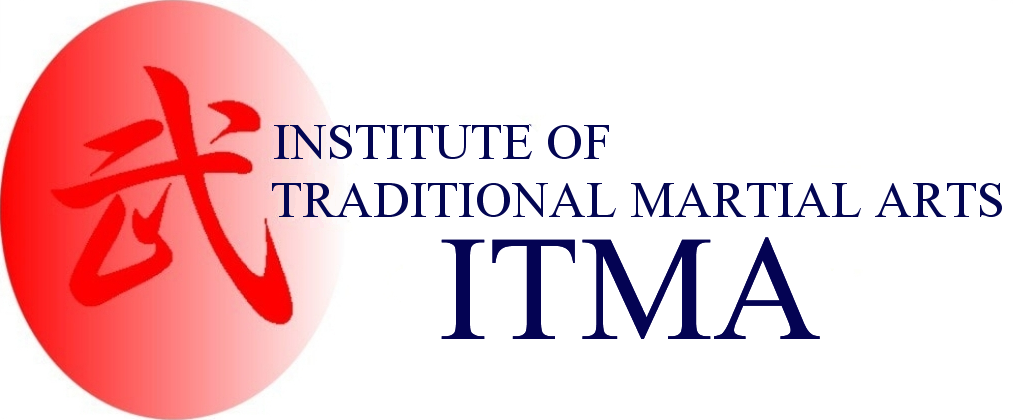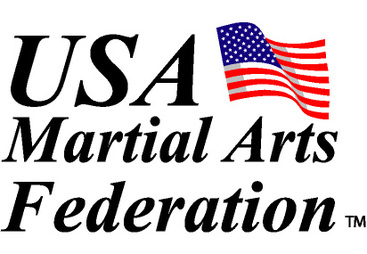Who We Are
The Institute of Traditional Martial Arts is the first of its kind in the United States, and possibly the world. It is an independent institute that is partnered with the Martial Arts International Federation (MAIF). It comprises a diverse group of martial artists representing various traditional, or traditionally-based Asian arts. We come from all walks of life. Some of us are academics or medical doctors and others work in the public and private sectors. What we all have in common is a passion for the martial arts and their growth and development. In addition to the Board Members below we are also fortunate to have on board some exceptional individuals who represent the Institute at the national and international levels. We are all committed to the Goals and Mission of the Institute (see below) and our efforts are directed toward creating a community of experts in the United States and around the world (a martial arts network, if you like); a community of talented individuals who, by working together, will help enhance the quality of life of all citizens and contribute to the growth, development, dissemination of knowledge and preservation of traditional martial arts locally and globally.
National/International Board of Advisers
(ii) Sifu Phil Romero, Romero's Wing Chun. Chair, Rank Recognition Committee
(iii) Sensei Linda Yiannakis, 6th Dan Traditional Kodokan Judo; 6th Dan Traditional Jujutsu (USJJF). Sandia Judo Club, ABQ, New Mexico
(
(v) Sensei Mark Fraser, 5th Dan Judo, Sandia Judo Club, ABQ, New Mexico
(vi) Sensei Dr. James Cornfield, 4th Dan Aikido, 4th Dan Yamate Ryu Aikijutsu; Chief Instructor, Sandia Budokan, ABQ, New Mexico
(vii) Sensei Greg Kane, Ph.D., 5th Dan Jujutsu; Associate Professor, Eastern CT State Univ. Head Instructor at the University
of Connecticut
(viii) Sensei Josh Scheiner-Ortega (7th Dan Kenpo; Self Defense Instructor, UNM; Chuan Fa Hall of Fame)
(ix) Sensei Hal Zeidman, 7th Dan Jujutsu/Kenjutsu, American Traditional Jujutsu Assoc.)
(x) Sensei Kostas Dervenis, 5th Dan Jujutsu/Jojutsu. Headmaster of Pammachon, Athens, Greece
(xi) Sensei Robert Baker, Ph.D., 5th Dan Jujutsu (and Menkyo Chuden). Assoc. VP IL State Univ., and Head Jujutsu Instructor,
Illinois State Univ., Chicago, IL.
(
(xiii) Sensei Eugene Sedeno, 9th Dan Kenpo Karate and Kajukenbo, Albuquerque, NM
(xiv) Sensei Rob Debuck, 4th Dan Judo; 1st Dan Tae Kwon Do. Former APD Captain and Specialist in
Handgun Disarming/Retention Techniques. Albuquerque, NM.
(xv) Sensei Robert Malakhov, 4th Dan Jujutsu. Club Instructor in Jujutsu at Sandia Budokan, Albuquerque, New Mexico
Goals and Mission of the Institute of Traditional Martial Arts
(I) To help promote the study, teaching and research of traditional martial arts and their application in the modern world
(II-a) To explore through research and application the relationship between Martial Arts & Health (Mental & Physical)
(II-b) Committee on Martial Arts & Health
Directory of Health Care Practitioners
(III) To help establish and promote a sense of community among diverse martial arts systems and participants in New Mexico,
the United States and internationally (e.g., Friendship Seminars; Martial Arts Expo; Workshops/Clinics, etc.). The ultimate goal is
to establish a martial arts network (called martial net) that will serve as a resource for all martial artists in the network
(IV) To award ITMA Rank Recognition to members of martial net (by invitation only)
(V-a) To develop Outreach Programs that help benefit the young (especially at risk youth), and other critical populations,
and help embed traditional systems in schools, clubs, universities, the police, security agencies, and the like
(V-b) Committee on Outreach Programs
(VI) To develop instructional material and videos on the technical, historical and philosophical aspects of the martial arts
(VII) To put on clinics, workshops, demonstrations and summer camps
(VIII-a) To help improve the Quality of Life through the study and practice of traditional martial arts, especially as
lifetime forms of activity
(VIII-b) Committee on Quality of Life
(IX-a) To develop an organizational structure that helps contribute to professional development and provides additional
certification for instructors in specialized areas:
(IX-b) Committee For Professional Development & Instructor Certification in Specialized Areas structure that helps.
The Institute of Traditional Martial Arts is the first of its kind in the United States, and possibly the world. It is an independent institute that is partnered with the Martial Arts International Federation (MAIF). It comprises a diverse group of martial artists representing various traditional, or traditionally-based Asian arts. We come from all walks of life. Some of us are academics or medical doctors and others work in the public and private sectors. What we all have in common is a passion for the martial arts and their growth and development. In addition to the Board Members below we are also fortunate to have on board some exceptional individuals who represent the Institute at the national and international levels. We are all committed to the Goals and Mission of the Institute (see below) and our efforts are directed toward creating a community of experts in the United States and around the world (a martial arts network, if you like); a community of talented individuals who, by working together, will help enhance the quality of life of all citizens and contribute to the growth, development, dissemination of knowledge and preservation of traditional martial arts locally and globally.
National/International Board of Advisers
(ii) Sifu Phil Romero, Romero's Wing Chun. Chair, Rank Recognition Committee
(iii) Sensei Linda Yiannakis, 6th Dan Traditional Kodokan Judo; 6th Dan Traditional Jujutsu (USJJF). Sandia Judo Club, ABQ, New Mexico
(
(v) Sensei Mark Fraser, 5th Dan Judo, Sandia Judo Club, ABQ, New Mexico
(vi) Sensei Dr. James Cornfield, 4th Dan Aikido, 4th Dan Yamate Ryu Aikijutsu; Chief Instructor, Sandia Budokan, ABQ, New Mexico
(vii) Sensei Greg Kane, Ph.D., 5th Dan Jujutsu; Associate Professor, Eastern CT State Univ. Head Instructor at the University
of Connecticut
(viii) Sensei Josh Scheiner-Ortega (7th Dan Kenpo; Self Defense Instructor, UNM; Chuan Fa Hall of Fame)
(ix) Sensei Hal Zeidman, 7th Dan Jujutsu/Kenjutsu, American Traditional Jujutsu Assoc.)
(x) Sensei Kostas Dervenis, 5th Dan Jujutsu/Jojutsu. Headmaster of Pammachon, Athens, Greece
(xi) Sensei Robert Baker, Ph.D., 5th Dan Jujutsu (and Menkyo Chuden). Assoc. VP IL State Univ., and Head Jujutsu Instructor,
Illinois State Univ., Chicago, IL.
(
(xiii) Sensei Eugene Sedeno, 9th Dan Kenpo Karate and Kajukenbo, Albuquerque, NM
(xiv) Sensei Rob Debuck, 4th Dan Judo; 1st Dan Tae Kwon Do. Former APD Captain and Specialist in
Handgun Disarming/Retention Techniques. Albuquerque, NM.
(xv) Sensei Robert Malakhov, 4th Dan Jujutsu. Club Instructor in Jujutsu at Sandia Budokan, Albuquerque, New Mexico
Goals and Mission of the Institute of Traditional Martial Arts
(I) To help promote the study, teaching and research of traditional martial arts and their application in the modern world
(II-a) To explore through research and application the relationship between Martial Arts & Health (Mental & Physical)
(II-b) Committee on Martial Arts & Health
Directory of Health Care Practitioners
(III) To help establish and promote a sense of community among diverse martial arts systems and participants in New Mexico,
the United States and internationally (e.g., Friendship Seminars; Martial Arts Expo; Workshops/Clinics, etc.). The ultimate goal is
to establish a martial arts network (called martial net) that will serve as a resource for all martial artists in the network
(IV) To award ITMA Rank Recognition to members of martial net (by invitation only)
(V-a) To develop Outreach Programs that help benefit the young (especially at risk youth), and other critical populations,
and help embed traditional systems in schools, clubs, universities, the police, security agencies, and the like
(V-b) Committee on Outreach Programs
(VI) To develop instructional material and videos on the technical, historical and philosophical aspects of the martial arts
(VII) To put on clinics, workshops, demonstrations and summer camps
(VIII-a) To help improve the Quality of Life through the study and practice of traditional martial arts, especially as
lifetime forms of activity
(VIII-b) Committee on Quality of Life
(IX-a) To develop an organizational structure that helps contribute to professional development and provides additional
certification for instructors in specialized areas:
(IX-b) Committee For Professional Development & Instructor Certification in Specialized Areas structure that helps.


